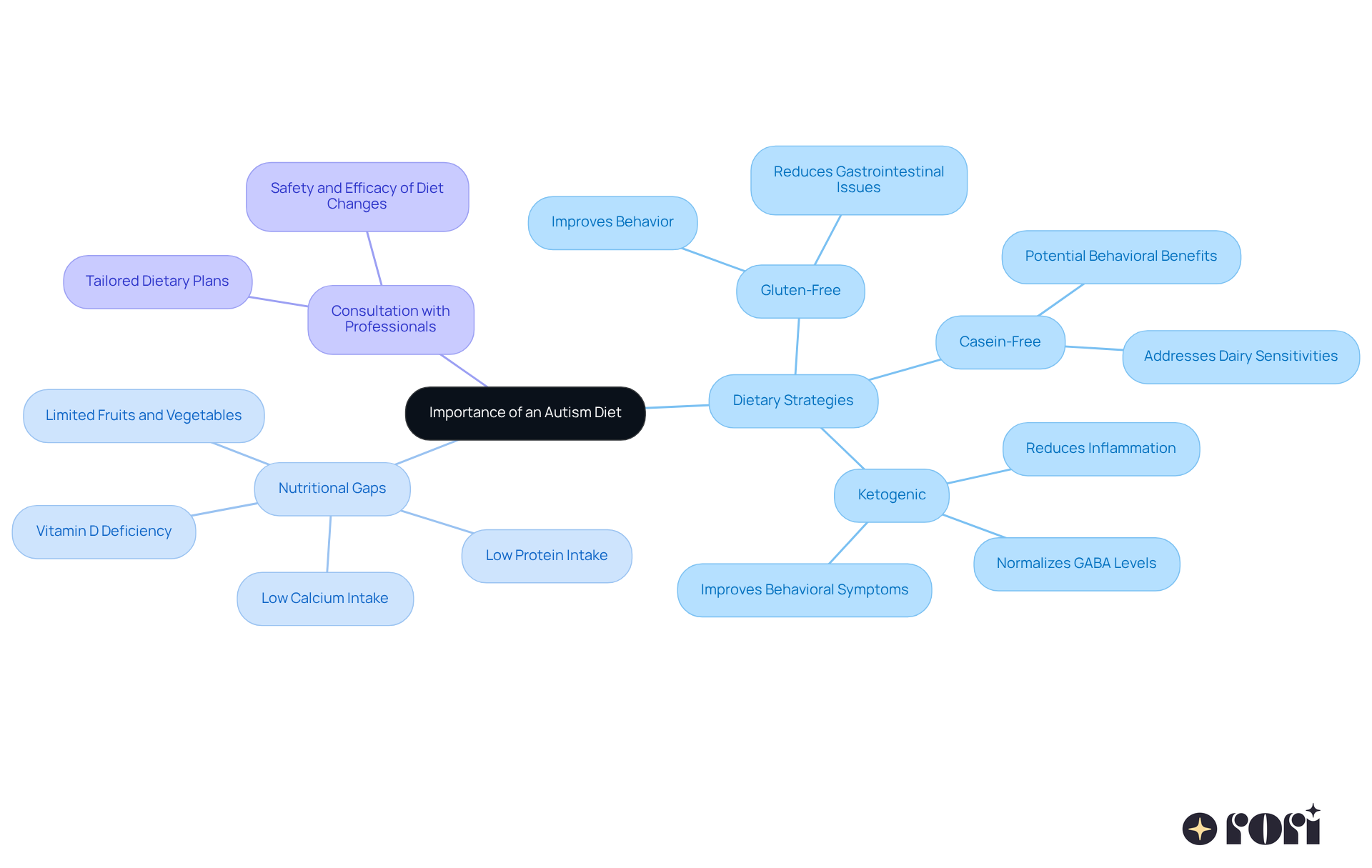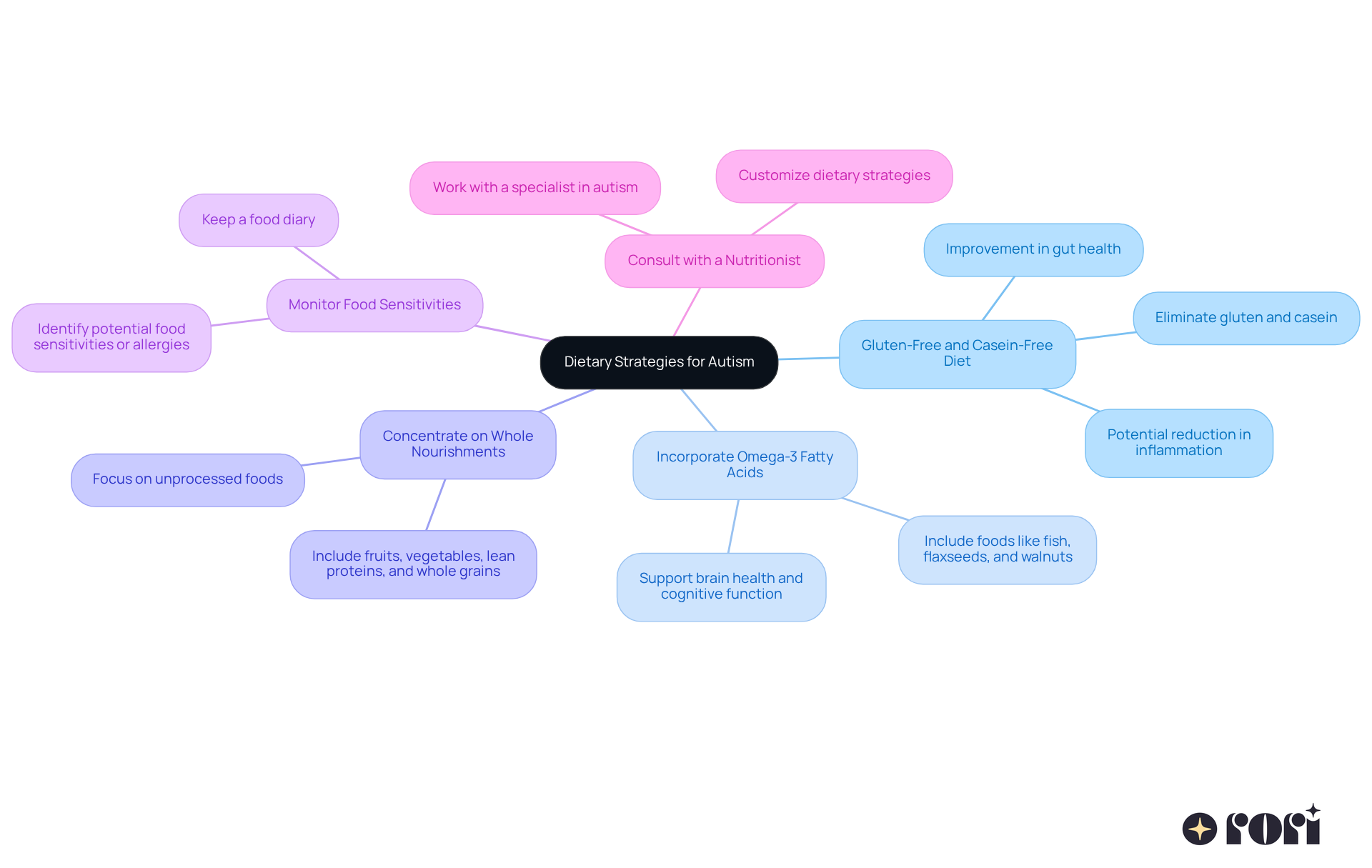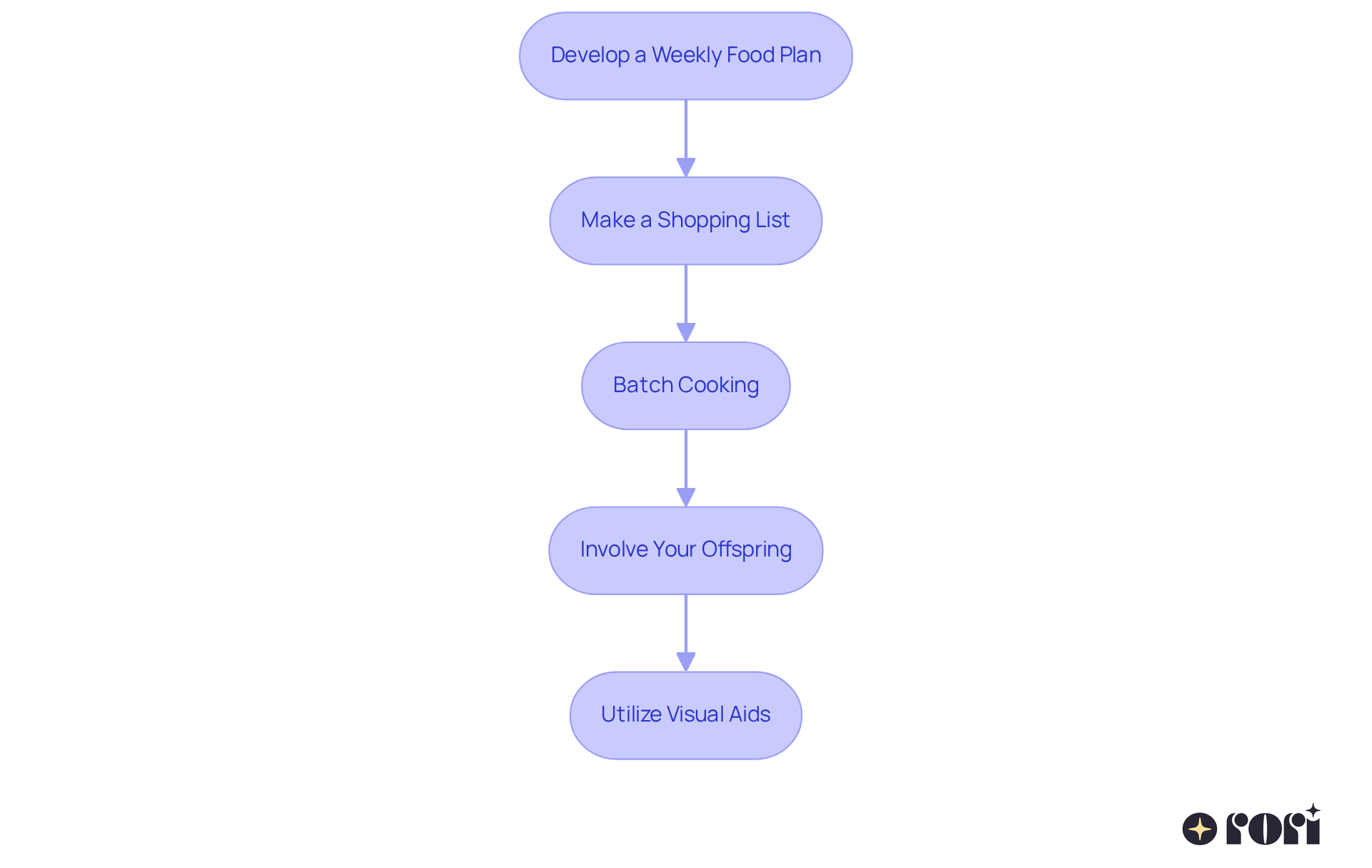Creating an effective autism diet meal plan is all about understanding how nutrition plays a vital role. It’s essential to explore dietary strategies, plan meals thoughtfully, and tackle common challenges along the way.
Let’s explore this together!
Creating a tailored meal plan for individuals with autism can truly make a difference in their overall well-being. It can enhance behaviors and social skills while also addressing common nutritional gaps. With more and more research pointing to the benefits of specific dietary strategies—like gluten-free or casein-free diets—families are discovering exciting new ways to support their loved ones.
Yet, navigating the complexities of meal planning can sometimes feel overwhelming. Many parents find themselves wondering:
Let’s explore this together!
An autism diet meal plan can really make a difference in managing symptoms and improving the quality of life for individuals on the spectrum. Research shows that making specific nutritional changes can lead to better behavior, attention, and social skills. Many parents have noticed that gluten-free and casein-free diets can help reduce gastrointestinal issues and behavioral challenges.
It’s interesting to note that kids with autism often eat fewer fruits and vegetables and may not get enough calcium and protein. This highlights the need for nutritional interventions! Plus, the ketogenic diet has shown some potential benefits, like normalizing GABA levels and reducing inflammation, which might help in managing autism symptoms.
Understanding the importance of nutrition is the first step in creating an autism diet meal plan that is tailored to your child’s unique needs. It’s essential to consult with healthcare professionals to ensure that any nutritional changes are safe and beneficial for your child, paving the way for a healthier lifestyle. Let’s explore this together! We’re here to help you every step of the way!

When creating an autism diet meal plan, it’s helpful to consider some dietary strategies that many families have found beneficial:
These strategies can make a difference in your autism diet meal plan, and remember, you’re not alone on this journey. We’re here to help you every step of the way!

Planning and preparing an autism diet meal plan for your child with autism can feel like a big task, but it can also be a fun journey! Here are some friendly steps to help you along the way:
Develop a Weekly Food Plan: Start by outlining dishes for the week. To ensure your child gets balanced nutrition, incorporate a variety of foods into the autism diet meal plan. Involve your child in the planning process—this makes it more engaging for them and helps them feel empowered about their food choices!
Make a Shopping List: Once you have your food plan, create a shopping list. This ensures you have all the necessary ingredients on hand. Sticking to your list can help avoid those tempting impulse purchases, which is great for maintaining consistency and reducing stress for you as a caregiver.
Batch Cooking: Consider preparing larger quantities of meals and freezing portions for later. This saves you time and ensures that the autism diet meal plan includes nutritious options that are always available. Plus, it can help support your child's behavioral goals by having organized food choices ready to go!
Involve Your Offspring: Encourage your child to help out in the kitchen! This not only fosters a positive relationship with food but also increases their willingness to try new dishes. You might be surprised at how much they enjoy being a part of the process!
Utilize Visual Aids: If your child responds well to visual cues, think about using images or diagrams to illustrate food choices and preparation steps. This can be a game-changer, providing clear guidance and making the whole meal prep experience more enjoyable for everyone involved.
Let’s explore this together and make mealtime a positive experience for your family!

Meal planning can be a challenge for families, but you're not alone! Let’s explore some common issues and effective strategies to tackle them together:
Selective Eating: Getting your little one to try new foods can be tricky. Start by introducing new items slowly, pairing them with favorites, and creating a positive mealtime atmosphere. Many autistic individuals have strong aversions to certain foods, often due to sensory sensitivities related to texture, taste, and smell. By applying ABA principles, you can support your child's goals and encourage them to explore new foods in a consistent way.
Time Constraints: If your family is always on the go, prepping meals on weekends can really save time during the week. Consider using a slow cooker for hands-off meal preparation—this way, you can have healthy dishes ready with minimal effort! Establishing organized dining times can also enhance eating practices for kids on the autism diet meal plan. Keep track of how your little one reacts to various dishes, which can help you refine your meal planning over time.
Budget Limitations: Eating healthy doesn’t have to be expensive! Focus on seasonal produce, buy in bulk, and don’t overlook frozen fruits and veggies. They’re cost-effective and nutritious options that won’t compromise quality. Keep an eye on expenses and meal preferences to ensure your child receives balanced nutrition while sticking to your budget.
Nutritional Gaps: Worried about your kid’s nutrient intake? Consulting with a nutritionist can provide tailored advice on supplements or alternative food sources to ensure balanced nutrition. It’s common for individuals with autism to follow an autism diet meal plan, which can help prevent nutritional deficiencies. Engage in this process by gathering information on your child's eating habits, which can guide helpful conversations with nutritionists.
Behavioral Issues During Meals: To create a more peaceful mealtime experience, set up a calm and structured environment. Visual schedules can help your little one understand what to expect, reducing anxiety and encouraging positive behavior around food. Using strategies like positive reinforcement can also minimize conflicts and enhance the eating experience. By being actively involved in your child's mealtime routines, you can foster a supportive atmosphere that aligns with ABA principles.
Remember, you’re not alone in this journey! We’re here to help you every step of the way. Feel free to share your experiences or ask questions—we’d love to hear from you!

Creating an effective autism diet meal plan goes beyond just food choices; it’s about enhancing the overall quality of life for individuals on the spectrum. By understanding the importance of nutrition and implementing tailored dietary strategies, families can make meaningful strides in managing autism symptoms. The journey toward a healthier lifestyle starts with informed decisions and a commitment to exploring the right dietary options for each unique child.
In this guide, we’ve highlighted key strategies like:
Involving children in meal planning and preparation is also crucial, as it fosters a positive relationship with food. Plus, addressing common meal planning challenges—like selective eating and budget constraints—equips families with practical solutions to navigate this journey effectively.
Ultimately, the importance of a structured diet for individuals with autism cannot be overstated. By taking actionable steps, such as consulting with nutritionists and creating engaging meal plans, families can empower their children to thrive. The path to better health and enhanced well-being is within reach! Embracing these dietary strategies can lead to profound improvements in behavior, attention, and social skills. So, let’s take charge of nutrition together and make a lasting impact on the lives of those affected by autism!
What is the significance of an autism diet?
An autism diet can help manage symptoms and improve the quality of life for individuals on the spectrum, leading to better behavior, attention, and social skills.
What specific dietary changes are often beneficial for children with autism?
Gluten-free and casein-free diets have been noted to reduce gastrointestinal issues and behavioral challenges in children with autism.
What nutritional deficiencies are common in children with autism?
Children with autism often consume fewer fruits and vegetables, which can lead to insufficient intake of calcium and protein.
What potential benefits does the ketogenic diet have for individuals with autism?
The ketogenic diet may help normalize GABA levels and reduce inflammation, which could assist in managing autism symptoms.
How should one approach creating an autism diet meal plan?
It is essential to consult with healthcare professionals to ensure that any nutritional changes are safe and beneficial for the child, allowing for a tailored approach to their unique needs.